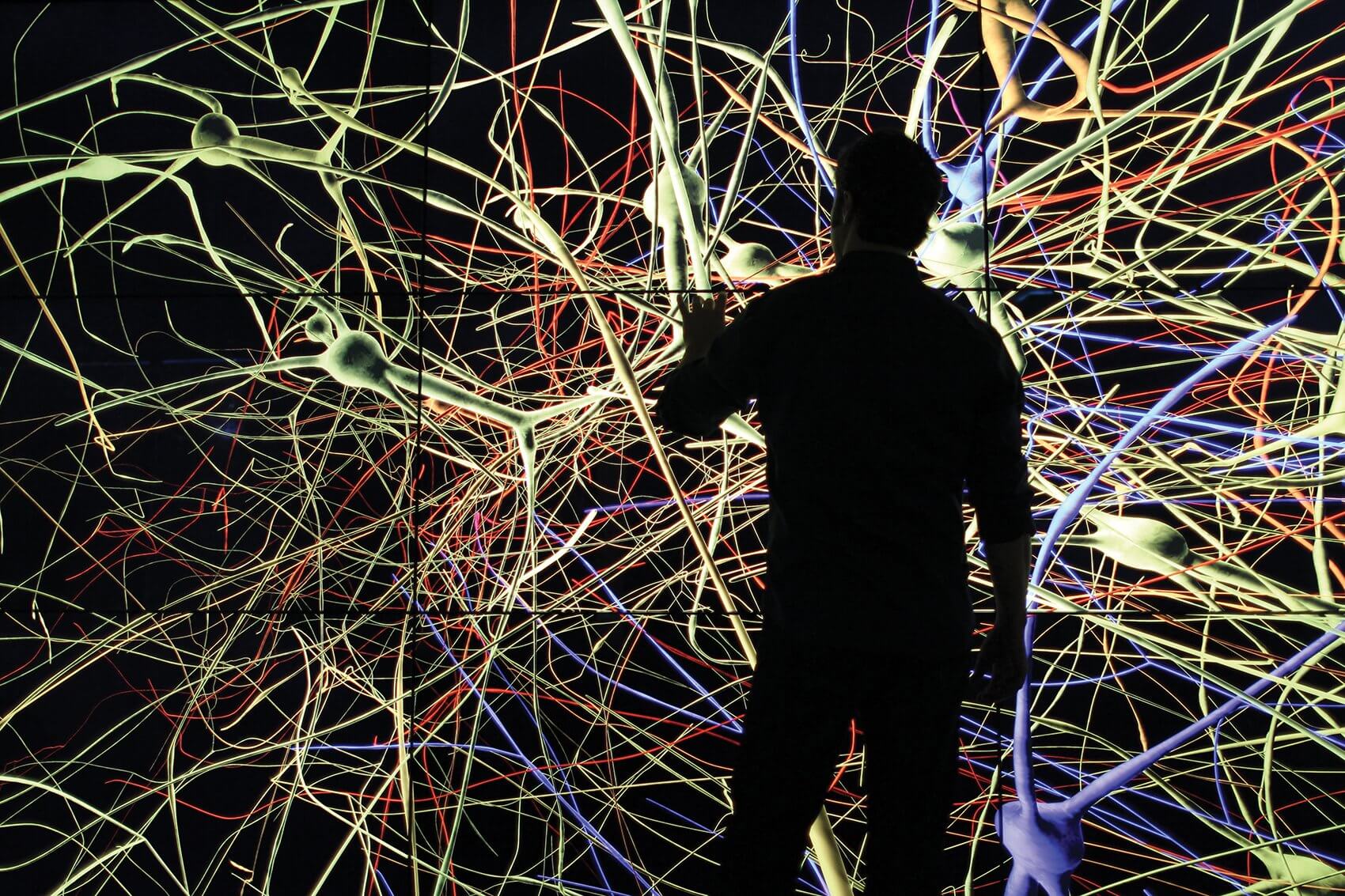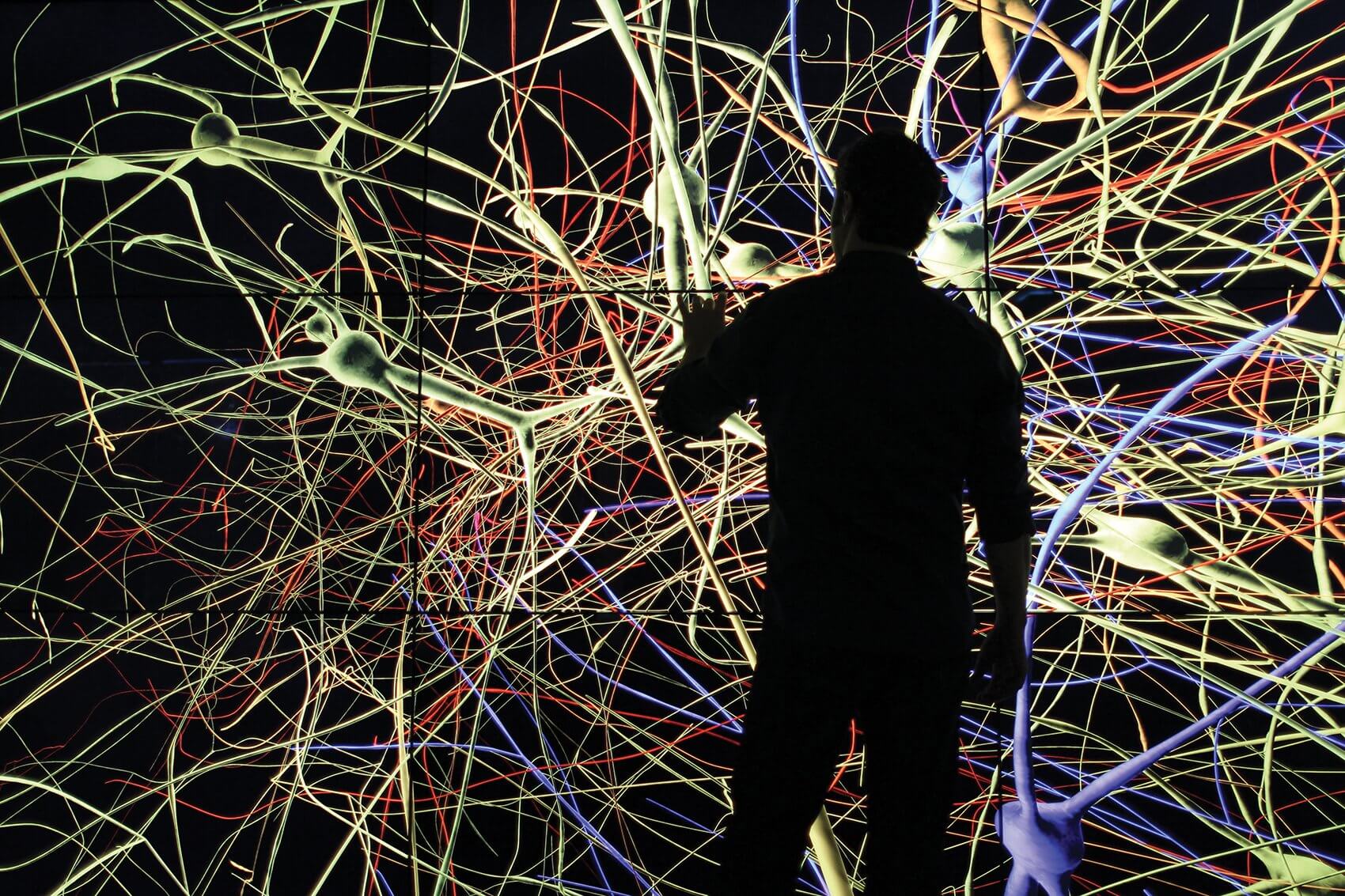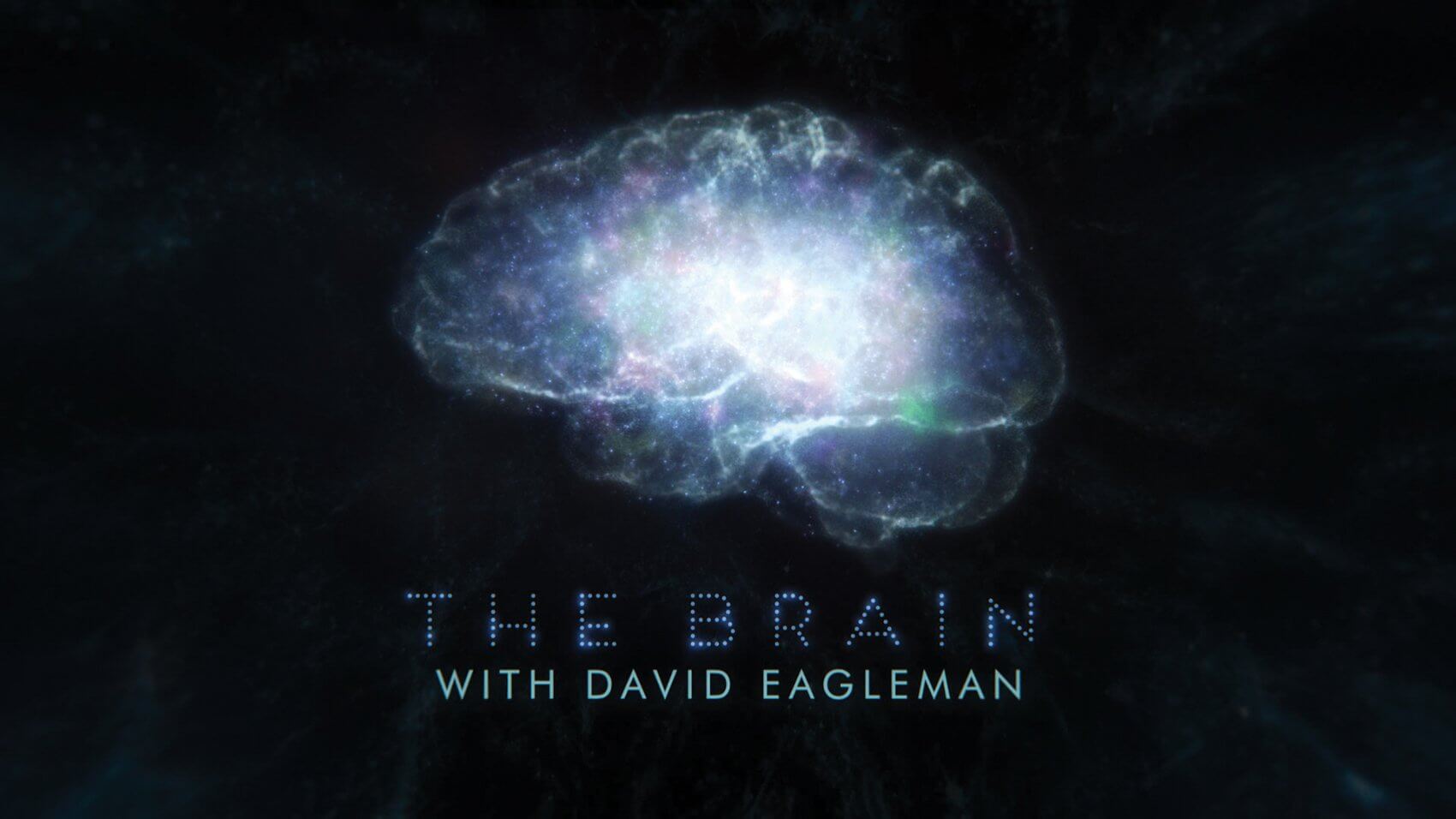Journey to the Inner Cosmos

The shot is striking: a lone girl, clad in an orange raincoat, sways slowly on a swing in the middle of an empty park. A profound sense of loneliness permeates the frame as the normally exuberant neuroscientist David Eagleman, Ph.D., adopts a solemn tone.
“The drive to work together has helped human populations thrive across the planet and build entire civilizations…and yet, there’s a flip side to this drive to come together,” Eagleman narrates in the fifth episode of his six-hour PBS series, “The Brain with David Eagleman.” “Because for every in-group, there are outsiders. And the consequences of that can be very dark.”
Presented in rapid succession, black-and-white clips from concentration camps flash across the screen as Eagleman remarks on a disturbingly familiar historical phenomenon—that of one group turning on another, more vulnerable population.
“If you were to look at my family tree, you would see that most of the branches end in the early 1940s,” Eagleman says. “That’s because most of my family is ethnically Jewish. That small social marker was enough to prompt Nazi genocide.
“Under normal circumstances, you wouldn’t find it conscionable to go murder your neighbor,” he continues. “What is it about certain situations that short circuits the normal social functioning of the brain?”
Employing his distinctive talent for repackaging intricate ideas in accessible ways, over the course of six hours, Eagleman guides viewers from within the darkness and silence of their own skulls to a not-so-remote future where human beings have found a way to upload their brains into digital space. Eschewing technobabble and white coats for exotic landscapes, innovative visual effects and compelling personal stories, “The Brain” probes the depths of our inner cosmos, exploring why we feel and think the things we do.
“The show was my opportunity to go and ask those deep questions about who we are, what reality is and how all this is constructed by the brain,” said Eagleman, a Guggenheim Fellow and New York Times bestselling author who also directs the Laboratory for Perception and Action at Baylor College of Medicine. “I was interested in how to disseminate the information I’ve been researching more publicly, in a way that everybody could get and care about. All of the pieces that I chose in the show had emotional resonance for me.”
According to Eagleman, that resonance traces all the way back to when he was eight years old, glued to his family’s sole television set and entranced by his spiritual predecessor and childhood hero—Carl Sagan.
“I watched ‘Cosmos’ when I was a kid; that was the only thing we watched in my house,” Eagleman said. “We had a television, but we never used it, because we weren’t allowed. Normal kids would get to watch television, but my father was a psychiatrist and my mother was a biology teacher, and they decided not to raise us with any television—with the exception of ‘Cosmos.’
“The interesting part is that when I first started pitching ‘The Brain’ several years ago, no one had done a show with a seriousness of purpose like that since the original ‘Cosmos,’” he added. “All of the production companies and television studios kept saying, ‘This is not something that we’re going to do unless we make it flashy and dumb it down a bit,’ and I would reply, ‘No, I want to do something like ‘Cosmos.’ I was sort of stuck in time, back in 1979 with Carl Sagan.”
In the process of talking with over 12 different production companies— many of whom envisioned the show’s host as a hybrid of mad scientist and adrenaline junkie, jumping out of airplanes on camera—Eagleman finally found a company that supported his vision of a production with gravitas and a “seriousness of purpose.”
“Blink Films, a production company from the U.K., just matched with me fantastically,” he said. “When we started working together, them from London and me from Houston, we both flew down to D.C. to pitch the series to PBS. And shortly after, we started making the show itself. It was about two years ago that we started outlining things and pushing cards around on a table until everything came together.”
Ricocheting between London and Houston, Blink Films worked closely with Eagleman to highlight the latter’s distinctive visual flair, peppering iconic imagery of the city throughout each episode. A panorama of Houston’s recognizable skyline is the focus of an early segment on perception and motion. Minutes later, Eagleman is seen walking briskly through the brownstone arches of Rice University. Sometimes that imagery takes the form of fleeting snapshots—from the historic signage adorning River Oaks Theater to the exterior of the Houston Zoo.
“Bringing the spotlight to Houston was a conscious choice, and it was done for two reasons,” Eagleman said. “One was because Houston’s never been featured before on center stage on a show like this. The other was out of pure necessity—I’m running a lab and two startup companies in Houston, so Ihadtobeherealot.”
Eagleman is a living, breathing manifestation of a Walt Whitman abstraction: we each contain multitudes. Constantly tasked with reconciling the different dimensions of his ambitions—the television host, the author, the neuroscientist, the entrepreneur—he currently divides his days between the halls of TMCx+, the Texas Medical Center’s coworking space for developing companies, and the Laboratory for Perception and Action at Baylor.
“It’s really, really hard to balance all of these things, especially running a neuroscience lab and being an entrepreneur at the same time,” he said. “The issues that matter are so completely different, and it’s something that I’m just getting my head around now. In the lab, you conduct basic science research, and you’re actively creating a body of work about particular things that interest you. As an entrepreneur, it’s just a completely different timescale. You have to raise the funds; draft a business plan; talk with potential customers; work with investors. It’s a completely different toolbox of skills.”
Lately, that timescale has been accelerating rapidly. NeoSensory, a startup that Eagleman co-founded, which uses sensory augmentation to convert sound to touch for people who are deaf or hard of hearing, just raised $4.2 million in funding. Eagleman’s second entrepreneurial brainchild, BrainCheck—an iPad app that uses neurocognitive tests to track cognitive health—is currently in use in schools, emergency rooms and senior centers throughout Houston. Always looking to the future, Eagleman envisions the app being used by professional football players, as well as high school and college teams worldwide.
“There’s so much to learn about being an entrepreneur,” said Eagleman, the chief scientific officer for both BrainCheck and NeoSensory. “Between understanding the finances behind a company to reading thick legalese documents, every day I’m just constantly learning something new. This has been challenging and rewarding.”
Plunging headfirst into uncharted terrain is a recurring theme for Eagleman. He’s in the process of pitching two different television shows, both exploring new philosophical and creative frontiers. And what else is next for this 21st century renaissance man? As Eagleman reflects in the last moments of the series’ final episode, “we face a future of uncharted possibilities.”






